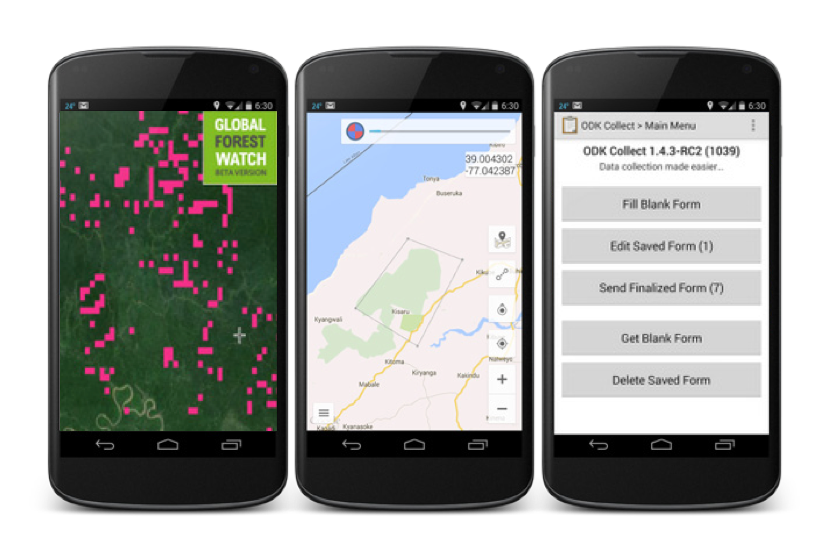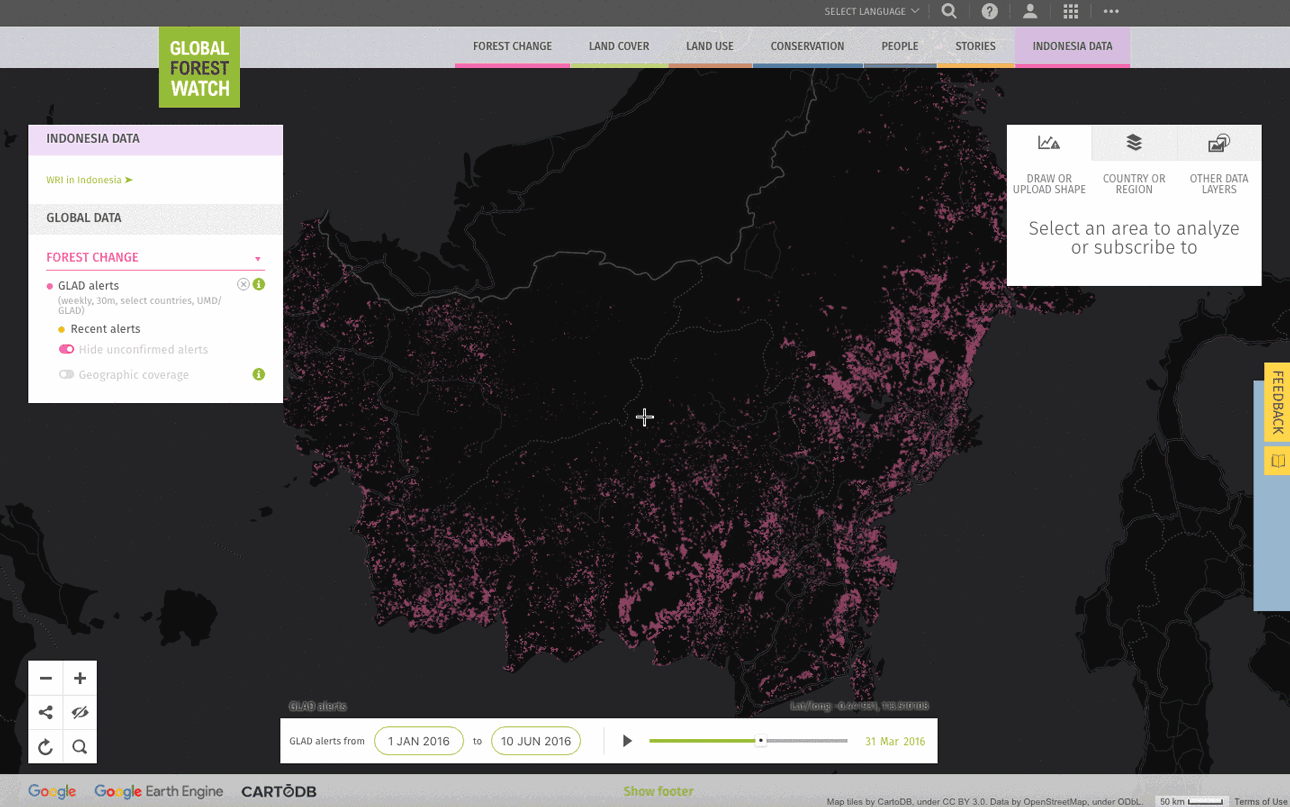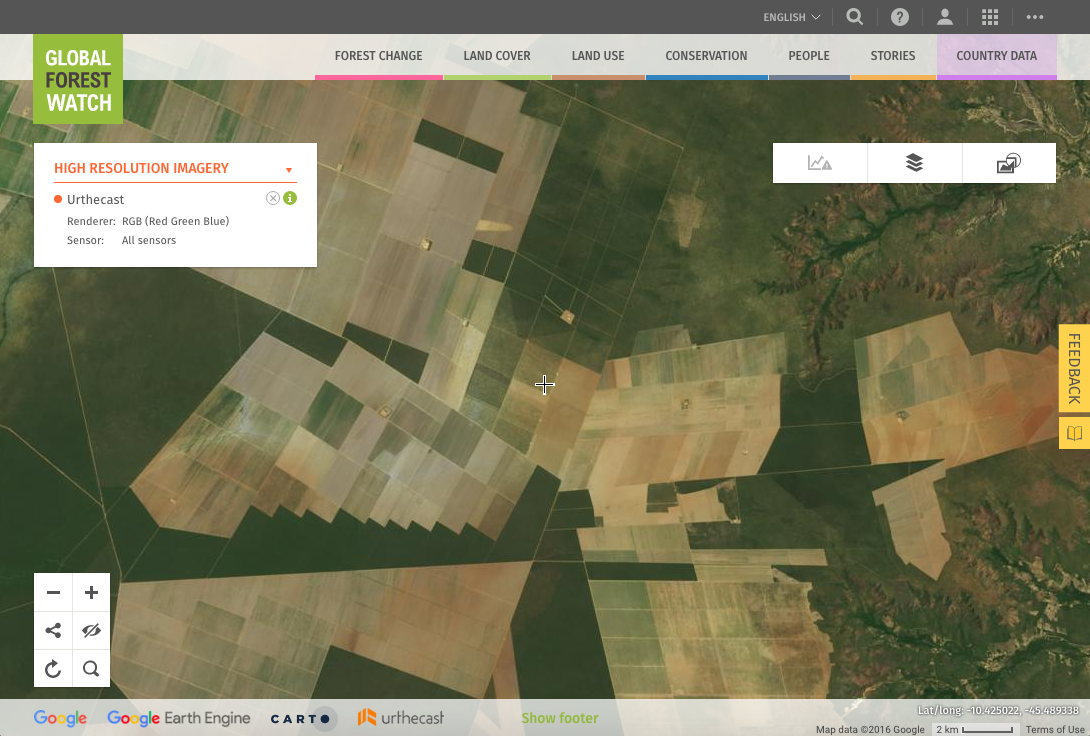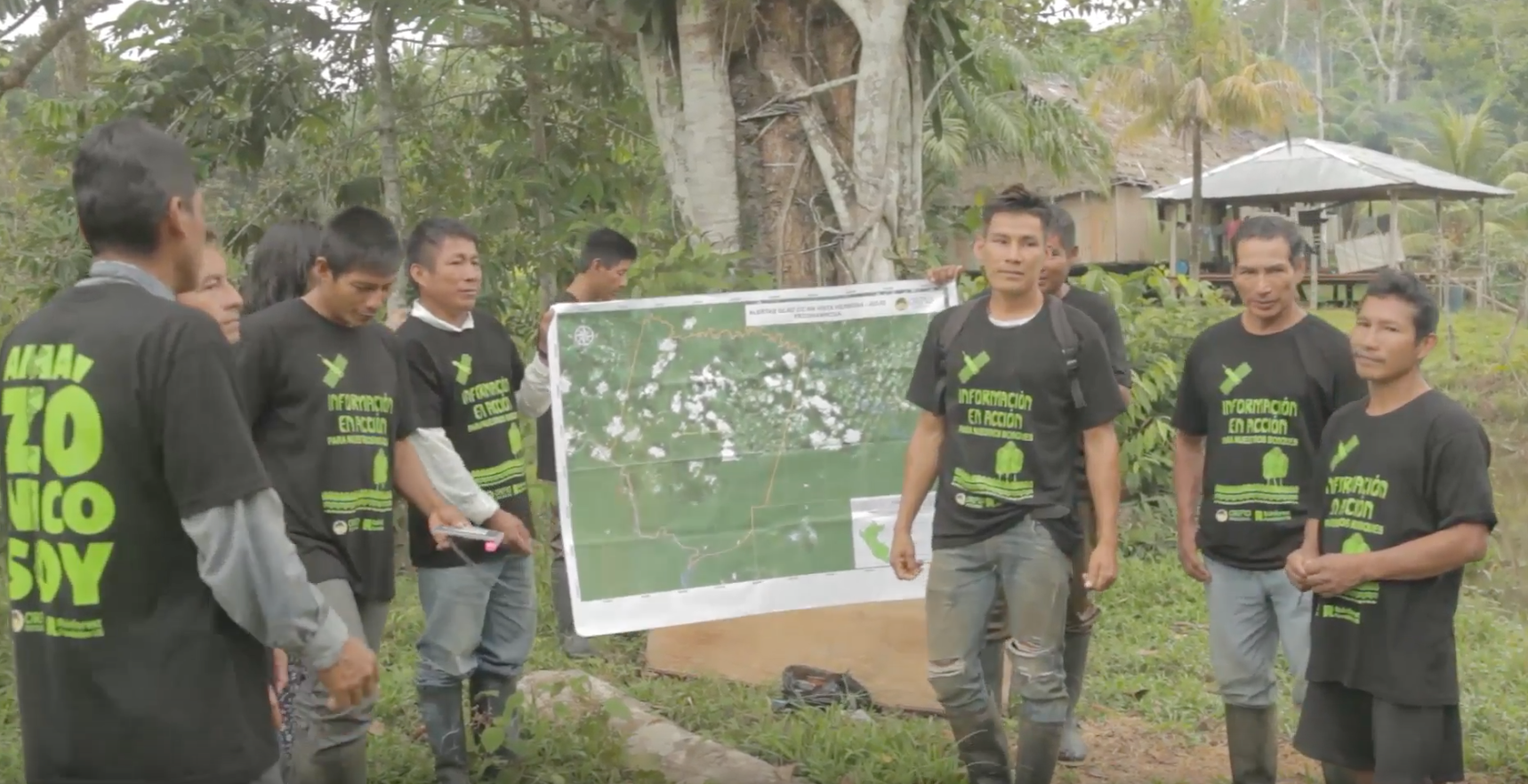- Data and Research
A Year in Review: Global Forest Watch Highlights from 2016

By Octavia Payne 2016 has been a busy year for Global Forest Watch! From the launch of new web applications to the addition of new data sets and features, Global Forest Watch is becoming an ever more powerful, customizable platform that meets our users’ needs. As we wrap up the year, let’s look back at all the exciting things we’ve accomplished.
New Apps and Tools
PALM Risk Tool The new tool on Global Forest Watch Commodities helps companies that that source palm oil spot deforestation in their supply chain. They can use the insights to reduce and eventually eliminate their contribution to deforestation. Read more about the tool and how to use it.

Forest Watcher

Forest Watcher is a new mobile app GFW developed in partnership with Jane Goodall Institute and Google Earth Outreach to put information on how forests are changing into the hands of those on the ground. It was piloted in Uganda throughout 2016 and will be available globally in 2017. Communities, protected area managers and private forest owners around the world often lack reliable Internet access of the capacity to use web-based tools like GFW. With Forest Watcher, users can access GFW’s powerful forest change data offline as well as document forest change and illegal activities from the ground to upload later to the cloud.

Global Forest Watch Water The newest addition to the GFW suite of web apps, Global Forest Watch Water tracks how forest loss, fires, erosion and unsustainable land use affect water security throughout the world. The app makes a clear case for protecting natural infrastructure, like forests, to improve the health of watersheds. Read more about how the app works.

Map Builder Imagine the impact you could make if you had access to a tool like GFW that was customized with data that’s important to your local cause and environment. Map Builder lets users do just that—combine GFW’s geospatial analysis features with their own data to create highly customized tools that let them monitor the forests and habitats that matter to them. Read more about the tool and watch our webinar to learn how to use it.

New Data
Global Forest Watch added 133 datasets in 2016. They ranged from the global scale down to national and regional scales, and focused on a variety of topics, including tropical deforestation, biodiversity and peat degradation. Others were major upgrades to our near real-time monitoring capabilities. Here are some highlights:
 GLAD weekly alerts show recent loss in Indonesia. View on interactive map.
GLAD weekly alerts show recent loss in Indonesia. View on interactive map.- GLAD alerts – The new alert system from University of Maryland’s Global Land Analysis and Discovery (GLAD) lab flags potential forest loss in as little as one week. Learn more.
- Terra-i alerts – This monthly monitoring system detects tree cover loss at 250-meter resolution across the entire tropics. Learn more.
- PRODES deforestation data – Brazil’s official satellite-based data on deforestation used by the national government also helps to establish better land use policies and track progress towards deforestation reduction goals. Learn more.
- Tiger Conservation Landscapes – The data map the world’s remaining 76 tiger habitats. An accompanying study from University of Minnesota, RESOLVE, Stanford University, Smithsonian, University of Maryland and WRI measured loss in these tiger habitats over the past 14 years. Learn more.
- Emissions from peat drainage – Even when it’s not burned, draining peat in tropical countries like Indonesia and Malaysia releases a significant amount of carbon to global emissions each year. New data on GFW Climate measures this critical source of emissions for tropical countries. Learn more.
- Plantations data – Satellites can’t easily distinguish between primary and secondary forests, which occur naturally, and planted forests, which are created and managed by people to supply timber, rubber and other commodities. Few countries provide accurate maps of plantation locations, therefore GFW and Transparent World mapped tree plantations in seven heavily forested nations for 2013 and 2014 (Brazil, Cambodia, Colombia, Indonesia, Liberia, Malaysia and Peru). Learn more.
- Soy in Brazil’s Cerrado – Companies can now find deforestation-free soy more easily in Brazil’s Cerrado biome. Learn more.
Are we still missing important data sets? Tell us which data we should add next year or add your own!
New Features
Global Forest Watch is much more than an interactive map—though we do love visualizing our many data sets! Check out the host of new features we rolled out to enhance your experience on our platform.
 UrtheCast imagery captures soy fields in the Matopiba region in Brazil’s Cerrado. View on map.
UrtheCast imagery captures soy fields in the Matopiba region in Brazil’s Cerrado. View on map.- My GFW – This feature allows users to upload their own data directly to the GFW Interactive Map, analyze it on-the-fly with Forest Change data sets and subscribe to receive email notifications when new tree cover loss is detected within their uploaded area(s) of interest. Learn more.
- Data upload form – Would you like to publish your own data to the GFW Interactive Map? You can now contribute data to our platform by completing this form!
- UrtheCast imagery – 15-meter, 22-meter and 5-meter resolution satellite imagery dating back to 2013 is now available the GFW platform thanks to a partnership with UrtheCast. New images become available daily and users can sort by filter, maximum cloud cover percentage and date range. Learn more.
- Translations – GFW is now available in six major languages (Bahasa Indonesia, English, French, Mandarin, Portuguese and Spanish). Just click the dropdown menu in the top menu bar to select your language.
- How-To Portal – A one-stop shop to for all things GFW. Check out tutorials, webinars, training modules and FAQs to learn how to make the most of the data, tools and features on our rich platform.
Growing User Community
These new data, features and products have helped grow and support our user community. In fact, we’ve nearly doubled the number of GFW users during 2016. And nearly 800 of you created My GFW Profiles to customize your experience on our platform and access special features like subscribing to alerts. But we’re always looking for input on how we can make GFW even better! For example, most of our users still come from the US, Brazil, Indonesia, Canada and the UK. Do you live in another country and work on forest-related issues? How can we improve our platform to meet your needs? Only about 4 percent of our users are from the media. Are there features or insights that would help you write better forest-related stories? Roughly one in four users come to GFW to use our country pages. How can we improve those to give you what you’re looking for? What kinds of blog posts would you like to read from our experts? We work hard to meet your needs! Tell us how we can improve in the coming year.
Thank You!
Global Forest Watch has evolved and improved so much in just one year and we can’t wait to show you what 2017 has in store. Thank you to our user community and our partners for making GFW what it is today. We hope you all have a happy holiday season and we’ll see you next year!
Explore More Articles

Triumphs and Challenges of Using Deforestation Alerts in Peru
In 2016, Global Forest Watch (GFW) and the University of Maryland released the world’s most detailed satellite-based deforestation alerts. Since the launch, the GLAD alert system has expanded from just three countries to the entire tropical region and is accessed by hundreds of thousands of users through GFW. Peru’s Early Warning Alerts After using the GLAD deforestation alerts, […]

A Year in Review: Global Forest Watch Highlights from 2017
It’s been another busy year for Global Forest Watch! This year we focused on putting the right data into the hands of our users to support action on the ground. We added more local data and made it easier than ever for decision-makers and on-the-ground forest monitors to access the information they need through national […]
